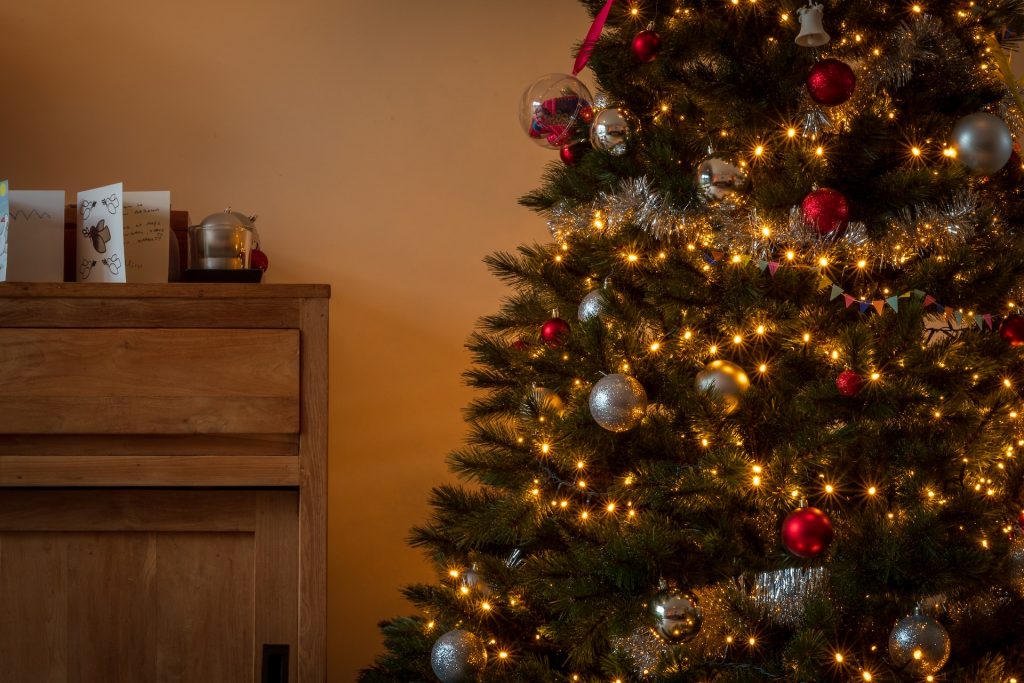Christmas Tree Safety
Sinead Campbell from London Flats Insurance highlights some important steps to take to ensure your Christmas tree and decorations are safe.

Christmas is a wonderful time of year for millions of families, but safety must stay front of mind when decorating your home. Christmas trees, lights and extensions leads can all pose serious risks if not handled correctly.
Here we’ll be outlining some of the danger points and reminding our readers of the easy ways you can reduce the risk to your residents and staff this year.
First Things First
Before we even go into the potential hazards Christmas decorations can pose, the first reminder is to check your fire alarms.
Residents should set themselves a reminder to change the batteries in the alarms in their units one a year. You should also check they’re working every couple of months while giving them a quick dust to avoid the sensors becoming blocked.
Property Managers will of course be up to date with Fire Safety checks, but it’s worth a double check of the alarm system at this time of year. With each unit most-likely playing host to a Christmas tree, lights and decorations, the risk is far higher during the holiday season.
Christmas Trees
Trees are the number one hazard at Christmas time; from fires, to falls, to the lights and decorations draped over them. If you need a reminder of the kind of danger they pose from a fire safety perspective, this famous video could serve as a stark reminder.
As a property manager, you can remind your residents of the key points:
- Choosing a real tree
If you’re going for a live tree, it’s important to check it’s well hydrated at purchase. Needles should be hard to pull back and full of colour. They shouldn’t break off easily and the trunk should be damp and sticky to the touch. Give your tree of choice a thump against the ground- if many needles fall off it’s unlikely to be freshly cut and has probably dried out, posing more of a fire risk.
- Real trees must be watered
Keeping your tree well-hydrated makes for a longer-lasting tree that looks healthier and holds onto its needles for longer, while also reducing your fire risk. Dry wood burns faster.
- Placement is important
Beautiful trees next to cosy, roaring fires may look picturesque, but this combo is not a wise choice. Trees (real or fake) should be placed at least 3 feet away from fireplaces, candles and heat sources such as radiators to avoid drying out and/or catching light.
Tree-Related Decorations
Of course with trees come tinsel, baubles and lights- complete with extension leads. You can also remind your residents of the following:
- Electric lights and metal don’t mix
For the sake of reducing your fire risk as well as the chance of any nasty electric shocks, don’t combine electric lights with metal objects or decorations. If you have a metal tree or metal decorations, use ornaments, tinsel, garlands etc alongside them. Don’t be tempted to use anything that plugs in! On this same point, avoid using staples, nails or pins to hang your lights- always stick to plastic hooks/fixings that won’t pose a shock risk.
- Turn lights off overnight/when you’re away
I think most of us will be in this habit anyway due to the horror stories we hear every year about house fires, but also because it’s an energy-saving tactic. Reduce your fire risk and save money by turning things off at the plug, even if they are LEDs that don’t produce heat.
- Check the ratings
We all love a bargain, but discount Christmas lights should be approached with caution. All lights should have a product safety testing logo on them, either from the Underwriter’s Laboratory (UI) or Intertek (ETL Semko) so check the packaging carefully.
- Watch out for frayed wires
When the time comes to dig them out of storage, check your lights over very carefully. Age or mice may have got the better of them, and frayed wires can cause shocks or fires. It’s worth giving them a good once-over to make sure they’re still in great condition.
- Outside for outside, inside for inside
Outdoor lights are designed to handle the elements. Indoor lights are not. Make sure you follow the guidelines on the packaging. You should also avoid running wires or extension cords through doors/windows. This can damage the wires, stop fire doors from closing and create more air flow to fires should they occur.
- Extension lead safety
Extension leads may not seem too dangerous but if they’re damaged, overloaded or create tripping hazards, they can cause big problems. Check them over before use and make sure you’re not overloading them by being aware of the maximum current rating for your particular lead. You can also avoid a trip to A&E and a dramatic tree-felling by not placing them over walkways.
Resident safety reminders should be at the top of your list this December, and hopefully this handy list will prevent any avoidable accidents occurring in your building.
For more information, please contact a member of the London Flats Insurance team on 020 7993 3034.
